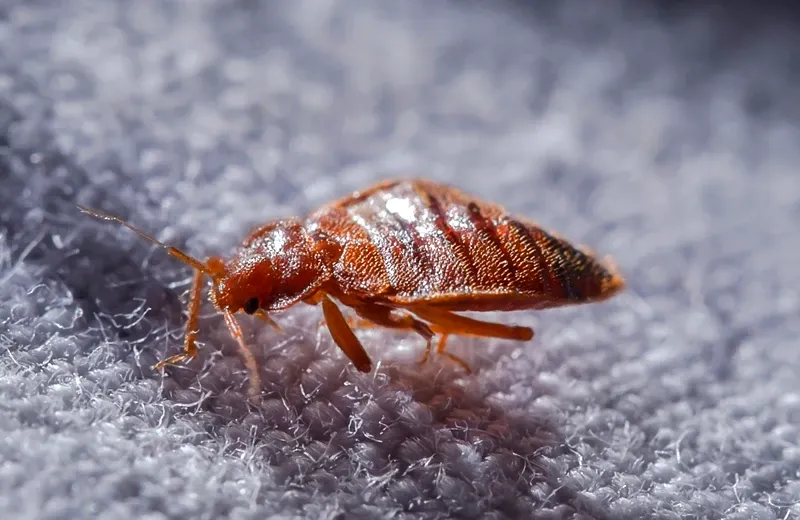Kings Cincinnati Pest Control Companies: Reliable Services
Kings Cincinnati Pest Control Companies: Reliable Services
Blog Article
Kinds Of Insect Control: Which Approach Is Right for Your Invasion?
When encountered with a bug problem, the selection of an appropriate technique for bug control is crucial in successfully managing the situation. By exploring the various types of insect control approaches readily available, people can make enlightened decisions tailored to their unique circumstances, ensuring a more reliable and lasting result in insect removal.
Chemical Insect Control
Chemical pest control entails the usage of artificial or naturally derived chemicals to take care of and get rid of pest populaces efficiently. This method is typically utilized in farming, forestry, and property settings to combat a vast array of insects, including weeds, pests, and rats. Making use of chemical pesticides can provide fast and targeted services to pest infestations, making it a preferred option for many people and companies.
Among the essential benefits of chemical bug control is its ability to promptly eliminate parasites, minimizing the risk of damages to crops, residential or commercial property, and human wellness. By utilizing specific chemicals that target specific pests, this technique can effectively manage infestations while lessening injury to helpful organisms and the atmosphere when used correctly.
Nonetheless, the use of chemical insect control additionally raises worries about prospective damaging effects on non-target types, water resources, and human health. It is vital to follow safety guidelines, apply chemicals responsibly, and take into consideration different pest control techniques to reduce these dangers and guarantee sustainable bug management practices.
Organic Bug Control
Organic pest control, likewise referred to as biocontrol, makes use of living microorganisms to decrease and handle bug populaces normally. This approach harnesses the power of nature to control insects without the requirement for artificial chemicals. Biocontrol can include the intro of all-natural adversaries of the parasite varieties, such as bloodsuckers, killers, or virus, to subdue parasite populaces. By making use of the parasite's all-natural predators or microorganisms, biological pest control offers a lasting and ecologically friendly service to pest management.

Mechanical Parasite Control
Making use of hands-on and physical approaches to take care of pest populations, mechanical bug control supplies an alternative method that does not rely upon using living microorganisms or synthetic chemicals. This method includes using obstacles, catches, or various other tools to literally deter or eliminate insects. By blocking insect entrance factors or establishing up catches to capture them, mechanical bug control can properly reduce infestations without introducing chemicals into the environment.
One typical instance of look at here mechanical bug control is the usage of mesh displays on doors and windows to stop pests from getting in structures. This straightforward yet reliable approach works as a physical obstacle, maintaining bugs out while enabling appropriate ventilation. Furthermore, devices like mousetraps, fly swatters, and ultrasonic repellents fall under the mechanical pest control category.
While mechanical pest control approaches can be labor-intensive and call for normal tracking and maintenance, they offer a ecologically friendly and sustainable solution for taking care of parasite invasions. By integrating different mechanical techniques, building proprietors can produce a thorough parasite control method that lessens dependence on chemical pesticides.
Physical Bug Control

Some typical physical bug control approaches consist of making use of barriers such as screens or internet to stop parasite access, traps to capture and remove insects, and hand-picking to physically eliminate bugs from plants or frameworks. In addition, strategies like warmth therapies can be made use of to regulate parasites like bed pests by raising the temperature to degrees that are dangerous to the pests.
Physical parasite control is specifically valuable in incorporated parasite monitoring (IPM) approaches, where numerous parasite control approaches are integrated for efficient bug administration while lessening using chemicals. By using physical insect control techniques, individuals can properly resolve bug invasions with very little environmental impact.
Integrated Pest Management
When implementing physical pest control approaches as component of bug administration techniques, Integrated Pest Monitoring (IPM) arises as an extensive method that leverages various strategies to efficiently control pest populaces. IPM concentrates on long-term avoidance of insects via a mix of biological, social, physical, and chemical tools customized to certain pest problems. By integrating multiple control strategies, IPM intends to reduce the threats connected with pests while additionally minimizing dependence on chemical solutions.
One trick element of IPM is the focus on tracking and analyzing pest populations to determine the most ideal control techniques. This aggressive method permits early treatment and targeted strategies, causing more effective pest administration. In addition, IPM promotes ecologically pleasant practices by focusing on non-chemical control approaches and only utilizing chemicals as a last hope.
Verdict

By making use of the insect's all-natural predators or pathogens, organic pest control uses a sustainable like this and ecologically friendly option to pest management. - Kings pest control cincinnati oh
Utilizing manual and physical techniques to take care of insect populaces, investigate this site mechanical pest control uses an alternative technique that does not count on the use of living microorganisms or artificial chemicals.An effective technique to managing insect populaces without counting on chemical or biological techniques entails the use of physical pest control techniques.When carrying out physical pest control approaches as part of bug management methods, Integrated Insect Management (IPM) emerges as a comprehensive method that leverages numerous strategies to properly manage pest populaces. Chemical insect control includes the use of chemicals, biological parasite control uses natural predators, mechanical insect control entails physical obstacles, physical pest control includes trapping or removing insects, and integrated bug administration incorporates numerous approaches for an all natural strategy to pest control.
Report this page